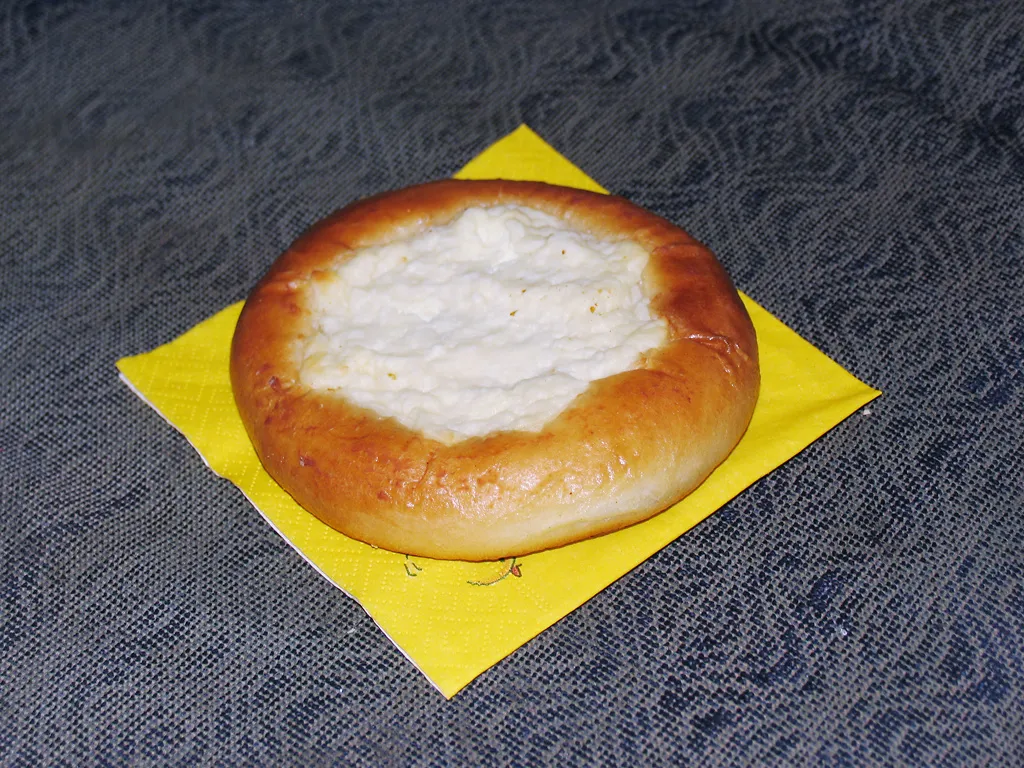The Best Fluffy Pancakes recipe you will fall in love with. Full of tips and tricks to help you make the best pancakes.
Russian cuisine is known for its rich flavors, hearty ingredients, and comforting dishes that bring warmth to any meal. Whether you’re looking for a satisfying soup, savory pastries, or classic homemade dishes, Russian cooking offers something for everyone. Rooted in centuries-old traditions, these recipes use simple yet flavorful ingredients like potatoes, beets, cabbage, and sour cream to create meals that are both delicious and easy to prepare.
In this guide, we’ll explore some of the most iconic Russian recipes, from borscht and pelmeni to blini and Olivier salad. You don’t need to be an expert chef to enjoy these dishes—just a love for good food and a willingness to try something new. Let’s dive into the world of Russian cooking and bring authentic flavors into your home!
Essential Ingredients for Russian Cooking
Russian cuisine is deeply rooted in history, geography, and tradition, resulting in a unique blend of flavors that are rich, hearty, and comforting. While the dishes vary from region to region, they all share a common reliance on simple yet flavorful ingredients. Whether you’re making a classic soup like borscht or preparing delicious dumplings like pelmeni, having the right ingredients on hand is key to achieving authentic Russian flavors. Below, we explore some of the essential spices, staple ingredients, and pantry must-haves for Russian cooking.

Key Spices in Russian Cooking
Unlike some other global cuisines that rely heavily on bold or spicy seasonings, Russian cuisine uses a more subtle approach, allowing the natural flavors of the ingredients to shine. However, certain spices and herbs are commonly used to enhance the taste of traditional dishes:
- Dill – One of the most recognizable flavors in Russian food, dill is used in soups, salads, fish dishes, and sauces.
- Bay Leaves – A staple in Russian soups and stews, bay leaves add depth and aroma to broths.
- Paprika – Adds mild heat and smokiness to dishes like Solyanka (a rich, spicy soup).
- Cumin – Often used in meat-based dishes, especially those influenced by Central Asian cuisine.
- Black Pepper – A simple but essential seasoning used in almost every Russian dish.
- Garlic – Frequently used in marinades, soups, and spreads for a rich, savory taste.
Must-Have Ingredients in Russian Cooking
Russian cuisine relies on fresh, hearty, and affordable ingredients that can be easily stored and preserved. Here are some of the most important components:
- Beets – A key ingredient in borscht, one of Russia’s most famous dishes. Beets add color, sweetness, and a rich earthiness to soups and salads.
- Cabbage – Used in shchi (cabbage soup), stir-fries, and fermented as sauerkraut for added depth and probiotics.
- Potatoes – A staple in Russian cuisine, potatoes are used in soups, stews, dumplings, and as a side dish.
- Sour Cream (Smetana) – Russian meals are often accompanied by smetana, a rich and tangy sour cream that enhances soups, pancakes (blini), and dumplings (pelmeni).
- Buckwheat (Grechka) – A popular grain in Russian households, often served as a side dish or cooked into porridge.
- Rye Bread – A deep, slightly sour bread that pairs well with soups and spreads. Kvass, a fermented Russian drink, is also made from rye bread.
- Eggs – Commonly used in Olivier salad, baked goods, and various breakfast dishes.
- Pickles and Fermented Vegetables – Russians love pickled cucumbers, tomatoes, and cabbage, which add tangy, crunchy flavors to meals.
How to Make Russian Food with Accessible Ingredients
If you don’t have access to traditional Russian ingredients, you can still make authentic dishes with common substitutes:
- Sour cream substitute: Use Greek yogurt or crème fraîche.
- Beets substitute: Try using red cabbage for a similar color and texture in some dishes.
- Kvass alternative: Use a mix of fermented apple cider and rye bread to create a similar flavor.
- Buckwheat substitute: Quinoa or farro can work as a replacement in certain dishes.
Traditional Russian Pantry Staples
A well-stocked Russian pantry allows you to prepare a variety of dishes without running to the store every time. Here are some pantry essentials:
- Kvass – A fermented rye bread drink, often homemade but available in some specialty stores.
- Honey – Used in both sweet and savory dishes, as well as in beverages like Medovukha (honey mead).
- Condensed Milk – Often used in desserts like Russian-style cakes and cookies.
- Caviar – A Russian delicacy, often served with blini or bread with butter.
- Mustard and Horseradish – Popular condiments for meats and sandwiches.
By keeping these essential ingredients in your kitchen, you’ll be well-equipped to explore the delicious world of Russian cooking. Whether you’re making a traditional soup, a comforting side dish, or a sweet pastry, these pantry staples will help you bring authentic flavors to your table.
Easy and Flavorful Russian Soups to Try
Russian cuisine is famous for its rich and hearty soups, which have been a staple of the diet for centuries. Due to Russia’s cold climate, soups are often warming, nourishing, and filled with bold flavors. Many traditional Russian soups use simple ingredients like root vegetables, cabbage, potatoes, and meats, creating dishes that are both satisfying and easy to prepare. Whether you’re looking for a vibrant beet soup, a rich and meaty broth, or a light cabbage-based dish, Russian soups offer something for everyone.
Below are some of the most beloved and flavorful Russian soups, along with tips to help you recreate them at home.

Borscht – The Iconic Beet Soup
Borscht is one of the most well-known Russian soups, famous for its deep red color and slightly sweet, tangy flavor. This soup is made primarily with beets and often includes cabbage, potatoes, carrots, onions, and sometimes meat (beef or pork). It’s typically served with a dollop of sour cream (smetana) and fresh dill on top.
Why You Should Try It:
- Packed with vitamins and antioxidants from beets.
- Can be made vegetarian or with meat for extra richness.
- Even better the next day as the flavors deepen.
Tips for Making the Best Borscht:
- Roast or sauté the beets before adding them to the soup to enhance their natural sweetness.
- Use a splash of vinegar or lemon juice to balance the sweetness and add a tangy kick.
- Serve with rye bread and garlic-infused lard (salo) for an authentic experience.
Solyanka – A Hearty and Tangy Meat Soup
Solyanka is a thick, slightly sour soup that is loved for its rich, smoky, and tangy flavors. It’s made with a mix of meats such as beef, ham, sausage, or smoked fish, and is flavored with pickles, olives, capers, and tomatoes.
Why You Should Try It:
- A perfect blend of smoky, savory, and tangy flavors.
- A great way to use leftover meats.
- Pairs wonderfully with sour cream and fresh herbs.
Tips for Making the Best Solyanka:
- Use brined pickles (not vinegar-based ones) for an authentic taste.
- Simmer the soup slowly to allow the flavors to fully develop.
- Garnish with lemon slices and fresh dill for a bright contrast.
Shchi – Traditional Russian Cabbage Soup
Shchi is a beloved Russian soup made with fresh or fermented cabbage, meat (often beef or pork), potatoes, and carrots. It has a mild but deeply comforting flavor, making it a go-to dish for cold weather. A variation called “sour shchi” uses sauerkraut instead of fresh cabbage for a tangier taste.
Why You Should Try It:
- Simple and budget-friendly ingredients.
- Light yet satisfying, great for digestion.
- Can be enjoyed hot or cold, making it a year-round dish.
Tips for Making the Best Shchi:
- If using sauerkraut, rinse it lightly to control the sourness.
- Cook the soup slowly for a rich, deep flavor.
- Serve with sour cream and a slice of rye bread for authenticity.
Ukha – A Light and Aromatic Fish Soup
Ukha is a clear fish soup that is light yet incredibly flavorful. Traditionally made with freshwater fish like perch or pike, this soup is infused with bay leaves, dill, and black pepper for a delicate yet aromatic broth.
Why You Should Try It:
- A great alternative to heavy meat-based soups.
- Healthy and high in protein, with a fresh and clean taste.
- Quick and easy to make in under 30 minutes.
Tips for Making the Best Ukha:
- Use fresh fish with bones for the most flavorful broth.
- Strain the broth after simmering to remove any small bones.
- Add a splash of vodka for an extra traditional touch (optional).
Tips for Perfecting Russian Soups at Home
- Use Homemade Broth: A rich, slow-cooked broth enhances the depth of flavor.
- Don’t Rush the Cooking Process: Russian soups develop deeper flavors when simmered slowly.
- Always Add Fresh Herbs: Dill, parsley, and bay leaves are essential for authentic Russian taste.
- Pair with Traditional Sides: Serve your soup with rye bread, sour cream, or pickled vegetables for the best experience.
Russian soups are comforting, flavorful, and surprisingly easy to make. Whether you’re in the mood for a tangy solyanka, a hearty borscht, or a light ukha, these traditional dishes will warm your soul and introduce you to the rich culinary traditions of Russia. So grab your pot, gather your ingredients, and start cooking!
Quick and Delicious Russian Side Dishes
Russian cuisine is well-known for its hearty main courses, but the side dishes are just as important in bringing balance, texture, and flavor to a meal. From crisp salads to warm, buttery pancakes, Russian side dishes complement soups, meats, and even tea-time snacks. Many of these dishes use simple, easily accessible ingredients like potatoes, cabbage, eggs, and sour cream, making them perfect for any home cook.
Below, we explore some of the most popular and easy-to-make Russian side dishes that will add authenticity and flavor to your table.

Olivier Salad – The Classic Russian Potato Salad
Olivier Salad is a staple at Russian celebrations, from New Year’s Eve feasts to birthday parties. This creamy and hearty potato salad includes diced potatoes, carrots, peas, pickles, boiled eggs, and either ham, chicken, or bologna, all mixed with mayonnaise for a rich and satisfying taste.
Why You Should Try It:
- A filling yet refreshing side dish.
- Perfect for parties and gatherings.
- Easily customizable—use different meats or add fresh herbs.
Tips for Making the Best Olivier Salad:
- Chop ingredients evenly for a consistent texture.
- Use homemade mayonnaise for a richer, fresher taste.
- Let it chill for at least an hour before serving to enhance the flavors.
Blini – Russian Pancakes (Savory and Sweet Options)
Blini are thin Russian pancakes, similar to French crepes but slightly thicker. They can be served as a savory side dish with sour cream, smoked salmon, or caviar, or as a sweet treat with jam, honey, or condensed milk.
Why You Should Try It:
- Versatile—serve them savory or sweet.
- Perfect as a breakfast side dish or a light snack.
- Soft, buttery, and delicious with various toppings.
Tips for Making the Best Blini:
- Use warm milk in the batter for a soft, fluffy texture.
- Let the batter rest for at least 30 minutes for better consistency.
- Cook on medium heat and flip gently to avoid breaking.
Kholodets – Russian Aspic (Jellied Meat Dish)
Kholodets is a unique and traditional Russian dish made from slow-cooked meat (often pork or beef) in a gelatinous broth, which sets into a jelly-like texture when cooled. It is usually served cold, garnished with horseradish or mustard.
Why You Should Try It:
- Packed with collagen, making it beneficial for skin and joints.
- A true taste of old Russian traditions.
- Pairs well with mustard, horseradish, and pickles.
Tips for Making the Best Kholodets:
- Use meaty bones (like pork knuckles or beef shank) to naturally create gelatin.
- Let it chill overnight to ensure it sets properly.
- Serve with rye bread and strong mustard for a full flavor experience.
Vinegret – Russian Beet and Potato Salad
Vinegret is a vibrant and refreshing Russian salad made with diced beets, potatoes, carrots, pickles, onions, and sometimes sauerkraut, all dressed in sunflower oil. The beets give it a beautiful pinkish-red color, making it one of the most visually appealing Russian dishes.
Why You Should Try It:
- Light and refreshing, yet still filling.
- Naturally vegan and gluten-free.
- Packed with nutrients from beets and other vegetables.
Tips for Making the Best Vinegret:
- Cook beets separately to prevent other vegetables from staining too early.
- Use sunflower oil instead of olive oil for an authentic taste.
- Let it sit for 30 minutes before serving so the flavors meld together.
How to Pair Russian Side Dishes with Main Courses
Pairing the right side dish with your main meal can elevate the entire dining experience. Here are some classic Russian pairings:
- Olivier Salad pairs well with grilled meats, kotleti (Russian meat patties), or baked fish.
- Blini make a great side dish for soups like borscht or solyanka.
- Kholodets is best served with rye bread, strong mustard, and pickles.
- Vinegret works beautifully alongside grilled chicken, herring, or roasted vegetables.
Russian Pastries and Snacks You Can Make at Home
Russian cuisine is famous for its hearty meals, but its pastries and snacks are just as delicious and deeply rooted in tradition. Whether you’re looking for something sweet to enjoy with tea or a savory treat to serve as an appetizer, Russian baked goods and snacks offer a variety of flavors and textures. Many of these recipes use simple ingredients like flour, butter, eggs, and dairy, making them easy to prepare at home.
Below, we’ll explore some of the most beloved Russian pastries and snacks that you can recreate in your own kitchen, along with tips to make them perfect every time.

Pirozhki – Russian Stuffed Pastries
Pirozhki (plural of pirozhok) are small, stuffed pastries that can be either baked or fried. They come with a variety of fillings, from savory options like ground beef, potatoes, mushrooms, and cabbage to sweet fillings like apples, berries, and sweetened cottage cheese.
Why You Should Try Them:
- Can be made in both sweet and savory versions.
- Perfect for a quick snack or on-the-go meal.
- Easy to customize with different fillings.
Tips for Making the Best Pirozhki:
- Use a soft yeast dough for a fluffy, airy texture.
- Let the dough rise properly to ensure light and pillowy pastries.
- Seal the edges tightly to prevent filling from leaking while baking or frying.
Vatrushka – Russian Sweet Cheese Pastry
Vatrushka is a round pastry with a soft, slightly sweet dough and a creamy cheese filling, often flavored with vanilla, raisins, or jam. These pastries are commonly enjoyed for breakfast or as an afternoon snack with tea.
Why You Should Try Them:
- A soft and creamy treat that pairs perfectly with tea or coffee.
- Simple to make with common ingredients.
- Can be customized with different flavors, such as fruit or chocolate.
Tips for Making the Best Vatrushka:
- Use high-quality farmer’s cheese (tvorog) for an authentic taste.
- Brush the dough with egg wash for a golden-brown finish.
- Let them cool slightly before serving to allow the filling to set.
Syrniki – Russian Cottage Cheese Pancakes
Syrniki are small, fluffy pancakes made from farmer’s cheese (tvorog), flour, eggs, and a touch of sugar. They have a slightly crispy exterior and a soft, creamy inside, making them a perfect breakfast or dessert option. They are typically served with sour cream, jam, or honey.
Why You Should Try Them:
- A healthy, protein-rich snack.
- Naturally sweet without needing too much sugar.
- Easy and quick to make in under 30 minutes.
Tips for Making the Best Syrniki:
- Use dry farmer’s cheese to avoid excess moisture in the batter.
- Don’t add too much flour—just enough to hold the pancakes together.
- Fry on medium heat to ensure a crispy outside and soft inside.
Khvorost (Angel Wings) – Crispy Fried Pastry Strips
Khvorost, also known as “angel wings,” are crispy, deep-fried pastry strips dusted with powdered sugar. These delicate and crunchy snacks are light, airy, and perfect with a cup of tea.
Why You Should Try Them:
- A fun, crispy snack that’s easy to make.
- Requires only a few ingredients.
- Great for sharing at gatherings.
Tips for Making the Best Khvorost:
- Roll the dough thin for the crispiest texture.
- Fry in hot oil to ensure even cooking without absorbing too much oil.
- Dust with powdered sugar while still warm for the best flavor.
How to Enjoy Russian Pastries and Snacks
Pairing these treats with the right accompaniments enhances their flavor and makes them even more enjoyable:
- Pirozhki pair well with soups like borscht or shchi for a hearty meal.
- Vatrushka and syrniki go perfectly with black tea or Russian-style coffee.
- Khvorost is best enjoyed as a light dessert with hot chocolate or compote.
Traditional Russian Drinks to Complement Your Meal
No Russian meal is complete without a traditional drink to accompany the food. Russian beverages range from refreshing fermented drinks to strong spirits, each with a rich history and unique flavors. Many of these drinks are made from natural ingredients like berries, honey, grains, and herbs, making them both flavorful and nourishing. Whether you’re looking for something to warm you up in the winter or cool you down in the summer, Russian drinks provide the perfect complement to any dish.
To dive deeper into Russian drinks, check out this detailed resource on Traditional Russian Drinks – Advantour.
Below, we explore some of the most popular and traditional Russian drinks, including non-alcoholic and alcoholic options.

Kvass – Russia’s Ancient Fermented Drink
Kvass is a slightly fizzy, mildly alcoholic drink made from fermented rye bread. It has been a staple of Russian cuisine for centuries and is often enjoyed as a refreshing summer drink or even used as a base for soups like okroshka.
Why You Should Try It:
- A natural probiotic drink that aids digestion.
- Lightly tangy and refreshing with a mild sweetness.
- Traditionally homemade but also available commercially.
Tips for Making or Buying the Best Kvass:
- Use dark rye bread for the most authentic flavor.
- Let it ferment for 1-3 days for the right balance of sweetness and tang.
- Chill before serving and garnish with fresh mint or berries for a refreshing twist.
Mors – Refreshing Berry Drink
Mors, a traditional Russian fruit drink, boils berries like cranberries, lingonberries, or black currants with sugar and water. People often serve it cold in summer and warm in winter.
Why You Should Try It:
- Naturally packed with vitamins and antioxidants.
- Can be sweetened to taste or enjoyed tart.
- A healthier alternative to store-bought juices.
Tips for Making the Best Mors:
- Use fresh or frozen berries for the best flavor.
- Strain the berries after boiling to remove seeds and skins.
- Add honey instead of sugar for a natural sweetener.
Medovukha – Russia’s Honey Mead
Medovukha, a traditional Slavic honey-based alcoholic drink, resembles mead but is lighter and lower in alcohol content. People widely consumed it in medieval Russia, and it remains a favorite for festive occasions.
Why You Should Try It:
- Naturally sweet with floral honey flavors.
- A historic drink dating back over a thousand years.
- Can be enjoyed warm or chilled.
Tips for Enjoying Medovukha:
- Look for naturally fermented versions instead of artificially sweetened ones.
- Serve chilled in summer or warm with spices in winter.
- Pair with cheeses, nuts, or desserts for a balanced taste.
Kompot – Russian Fruit Stew Drink
Kompot is a homemade fruit drink that simmers fresh or dried fruits with sugar and water. It’s a light, refreshing drink often served during meals.
Why You Should Try It:
- A simple and natural way to enjoy fruit flavors.
- You can serve it hot or cold, depending on the season.
- No artificial preservatives or additives.
Tips for Making the Best Kompot:
- Use a mix of fruits like apples, pears, cherries, and apricots for complexity.
- Simmer gently to extract maximum flavor without overcooking the fruit.
- Store in the fridge and serve over ice for a refreshing summer drink.
Russian Tea – A Time-Honored Tradition
Tea is an essential part of Russian culture, traditionally served from a samovar (a large metal urn that keeps water hot). Russian tea is often strong, black, and paired with lemon, jam, or honey.
Why You Should Try It:
- A warming and aromatic drink for any occasion.
- Can be enjoyed plain or sweetened with jam.
- Often served with pastries or sweets like pryaniki (spiced gingerbread cookies).
Tips for Making the Best Russian Tea:
- Use loose-leaf black tea for a richer flavor.
- Add lemon slices for a bright and refreshing taste.
- Pair with traditional Russian sweets for an authentic experience.
Vodka – Russia’s Famous Spirit
No discussion of Russian beverages is complete without mentioning vodka. This clear, distilled spirit plays a deep role in Russian culture and often accompanies celebrations, paired with traditional snacks like pickles, salted fish, or rye bread.
Why You Should Try It:
- A smooth and versatile spirit, you can enjoy it neat or in cocktails.
- Often served as part of toasts and traditional drinking rituals.
- Pairs exceptionally well with hearty Russian dishes.
Tips for Drinking Vodka the Russian Way:
- Serve it ice cold in small glasses.
- Pair with salty snacks like pickles or caviar to balance the strong taste.
- Drink in moderation and follow with a toast!
While enjoying the hearty and comforting flavors of Russian cuisine, consider complementing your meal with a refreshing cocktail like the Zesty & Refreshing Paloma. Its citrusy kick pairs well with a variety of dishes, offering a delightful balance of flavors.
How to Pair Russian Drinks with Your Meal
- Kvass pairs well with savory dishes like pirozhki or borscht.
- Mors is perfect with light meals, fish dishes, or desserts.
- Medovukha complements cheeses, nuts, and festive dishes.
- Kompot is ideal with home-cooked meals or pastries.
- You can best enjoy Russian tea with blini, vatrushka, or honey cakes.
- People traditionally serve vodka with salty and rich foods like pickled vegetables, smoked fish, and caviar.





